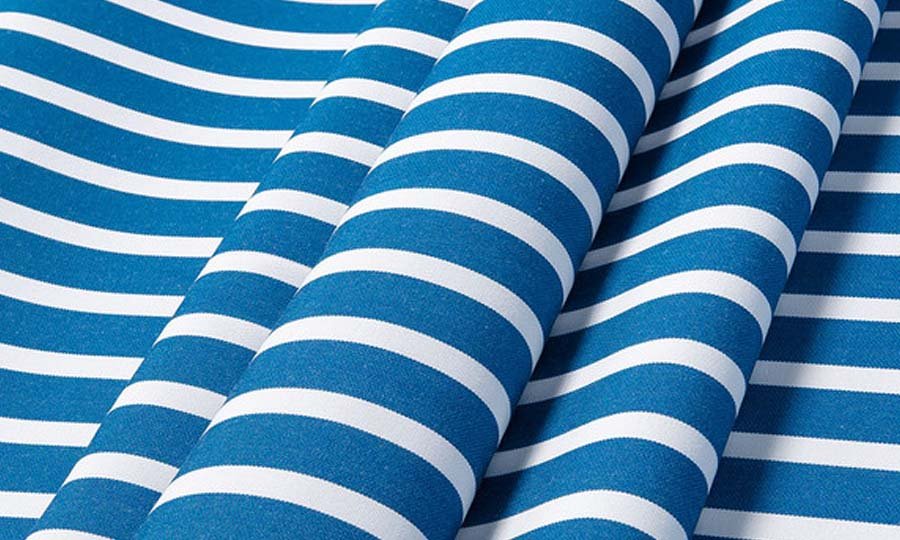Marine fabrics are not an exception to the ebb and flow of fashion trends. Customers are always on the lookout for marine fabric suppliers who offer durable products, look good, are easy to clean, and are affordably priced.
While it is difficult to satisfy all these demands, it is not impossible for marine fabric suppliers. The constant technological innovation in marine fabric manufacturing has made it possible to design and create products that satisfy the customer’s needs.
But before we explore the industry and its products in detail, it is important to understand the fundamentals properly.
What is Marine Fabric?
The latest offering of the ever-changing marine technology, the marine fabric, is exactly what the name suggests. It is a material created for nautical purposes for yacht owners, boaters, and all marine applications.
Marine fabric is much more durable than a normal cloth. It can withstand harsh weather conditions like sun exposure, saltwater, and UV rays. Below are the following applications of marine fabrics:
- Boat hooding
- Boat covers
- Beach Umbrellas
- Awnings
- Outdoor Blinds for beach houses
- Outdoor furniture for properties near seas and oceans
Marine fabrics are made using acrylic, polyester, and cotton threads to ensure that they can resist mould and mildew growth.
Marine Fabrics – Walking Down the Memory Lane
If we have to track down the ancestor of marine fabrics, it would be canvas, a piece of heavy fabric with multiple uses in ancient times. “Canvas” comes from the Arabic word cannabis. The weave of the canvas is very simple, with one thread going over and under another. However, this simple weaving technique produced a durable and water-resistant fabric.
Hemp is the oldest plant used for making fabrics in the world. Its application dates back to 3000 BC China, where researchers found cloth made from hemp. Besides canvas, cotton was used as a durable fabric in 1500 BC in ancient India. Cotton canvases were also used for making ship sails in Venice and Barcelona, a practice that was soon adopted throughout Europe.
Synthetic fibres were added into the fold only in the 19th century and had since then continued to dominate the market.
What are the Benefits of Marine Fabric?
Let’s talk about the features that differentiate marine fabrics from standard textiles.
Durability:
It must be durable because the marine fabric must withstand harsh weather conditions like saltwater, high-speed winds, exposure to direct sun rays, and UV rays. Marine canvases are woven so that they are resistant to tugs and stress. These are highly sturdy textiles that are commonly used for making awnings and tents as well. Apart from being applied in the marine industry, it is also used for making long-lasting shoes.
Wind and Water Resistant
The threads of marine textiles are tightly woven to make them water resistant, if not waterproof. On the other hand, a waterproofing treatment gives a finish to the fabric that helps it hold water. Tight-knit marine fabrics are also windproof and commonly used to make boat sails.
Breathable
Despite being a tightly woven fabric, Marine textile is quite breathable, which is why it is used for outdoor and nautical activities. Proper air circulation prevents growth, mildew, and mould on the fabric.
Retaining Colors
The tight-knit composition of marine fabrics ensures colour retention for a long time, even after prolonged exposure to harsh weather conditions. Even under extreme conditions, the material does not fade and maintains its original colour successfully.
Where are Marine Fabrics Used For?
Marine Fabrics are used primarily for nautical and marine outdoor activities.
Nautical Applications
Boat Sails: Many sailors prefer sourcing marine textiles from industrial fabric suppliers to make sails for their boats. While it is not very common to use marine textiles as boat sails, it does look beautiful, especially on large ships and boats.
Mildew and Mold Resistant Draperies: Stonelink Management says owners of old cabins and apartments often opt for marine fabrics as they are durable and mould resistant.
Upholstery: Marine textiles are stress and tug-resistant, making them perfect for furniture upholstery on yachts. It is used in multiple nautical DIY projects as well.
Outdoor Marine Uses
Car covers: Durable, breathable, and waterproof. All the markings of a perfect car cover. Marine canvases are often preferred for making car covers. However, it can be used as furniture covers as well.
Sunshades: Marine fabrics offer UV and sun rays protection and can withstand water and air resistance, making them a perfect fit for boat and beach sunshades.
Tents: Marine canvas fabrics are breathable and allow proper airflow, making them suitable for manufacturing tents.
The Bottomline
As we discussed in the article, marine fabrics have several benefits like their ability to withstand extreme environmental conditions and durability. These benefits allow the material to be used in different industries other than nautical and marine. Consult your local marine fabric supplier today to select the perfect textile.


